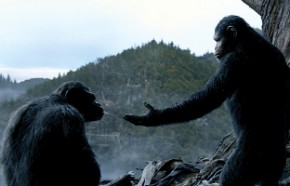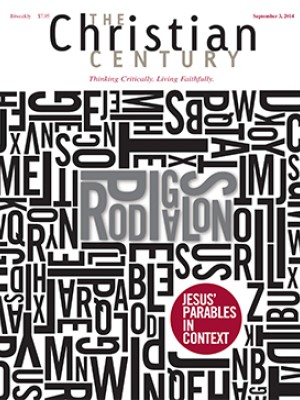The same deep down

The most common theme being played out this summer at the movies is: No matter who you are, deep down, you are just the same as everyone else.
The smartest of this summer’s offerings, Dawn of the Planet of the Apes, depicts a future in which most of humanity has been wiped out by an ape-born illness. The remaining apes commandeer the planet and evolve quickly; they speak, ride horses, and—unfortunately for the surviving humans—fire weapons. A postapocalyptic San Francisco provides the perfect backdrop for a man-versus-ape battle.
But the film’s moral punch is the claim that apes are not so much different from us: they speak and give evidence of higher thought. Likewise, we humans are the same as apes deep down because we are animalistic in our barbarity. When the film’s human characters have opportunities for either kindness or meanness, they show their wicked selves in full glory, detonating weapons designed to wipe out the apes. The apes’ leader Caesar (Andy Serkis) is more noble than anyone the humans can muster; the villainous human Dreyfus (Gary Oldman) is willing to stoop to any level to perpetuate his wretched species. The film is too good to be quite this preachy, but the point is clear: we and the apes are the same below the surface. Darwinism’s most enthusiastic evangelists couldn’t have made the point more clearly.
Read our latest issue or browse back issues.
A film that’s not in the contest for smartest of the summer is Luc Besson’s Lucy, whose title character is played by Scarlett Johansson. Lucy is premised on the old canard that we use only 10 percent of our brains, and if only we could use more, we could be ever so smart. According to this film we could learn languages instantly, move objects through space, stop time, and rule the universe.
The point of this film, however, is not to celebrate the brain’s capacity; it’s to propel Johansson into that rarified stratum of American films: the solo hero action flick. It’s the same movie that Bruce Willis makes every year, the same one that Clint Eastwood, Arnold Schwarzenegger, and John Wayne have made in the past. As difficult as it is for women to break into this genre, is it really progress that ScarJo can be as successful an ass-kicker as Bruce or Arnie? That she can imitate the same shoot-’em-up take-over-the-world solo hero that the boys can?
There are more sophisticated versions of this theme available for public consumption. On a mission trip to Cherokee, North Carolina, I saw a production of Unto These Hills, put on by the Eastern Band of the Cherokee in an outdoor theater. Unto These Hills tells the story of their people from an Edenic existence before the white men to just after the Trail of Tears forced relocation. Author Kermit Hunter wrote a number of outdoor theater plays in North Carolina in the early 1950s. They were often more influenced by cold war politics than by the actual history of North Carolina.
A key figure in Unto These Hills is Tsali, an actual historical personage. Tsali is depicted as killing white soldiers who hunted his family to send them west to Oklahoma on the Trail of Tears. Eventually he turns himself in in exchange for the right of other Cherokee to stay on their historic lands in western North Carolina. As the story goes, Tsali gives his life for his people.
The historical Tsali was executed for harming federal soldiers during the removal, but the play doctors his sacrifice to make it sound more Christian. My parishioners were impressed by how Christlike Tsali was, which was precisely Kermit Hunter’s aim: to show that the Cherokee were more Christian than white people ever realized. This is surely better than portraying them as savages, whether noble or otherwise. And there are impressive similarities between Cherokee “old ways” and Christianity (a single God, superhuman beings, another world, a premium on this-worldly harmony). But the Cherokee are not simply white Christians “deep down.” That doesn’t make them bad. It just makes them human—and different.
The danger of this great modernist pleasantry is that it is not, finally, respectful of difference. What happens if I discover that we are not “all the same deep down”? Is there still a reason for me not to kill you? Postmodernism’s appropriate reaction to modernity is to honor difference. But here’s the problem: it’s really hard to depict genuine difference.
Our Hollywood stories, repeated ad nauseam, are driven toward resolution through sameness.
Marilynne Robinson likes to point to the scientific observation that the human brain is the most complicated object we know in the entire universe. Every person we see is a walking universe of diverse sophistication, worthy of our limitless respect. If that biblical and anthropological point is true, our art should reflect the infinite and God-glorifying differences between us.





